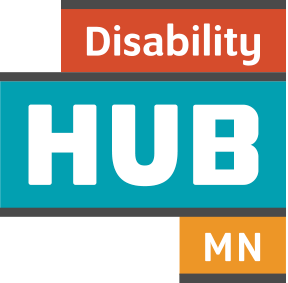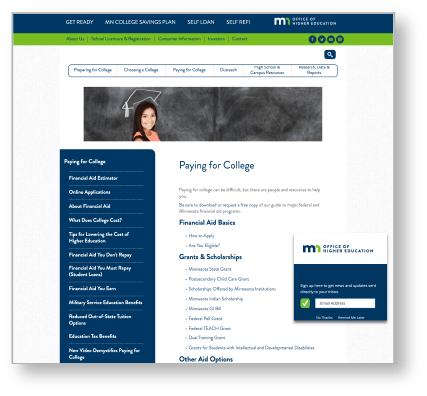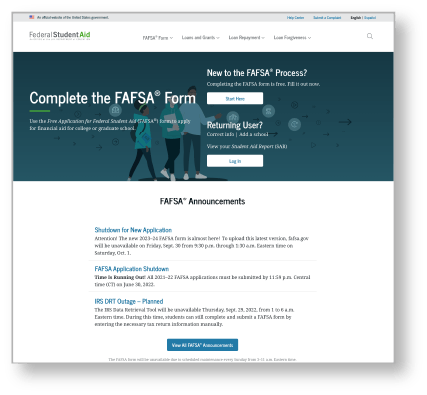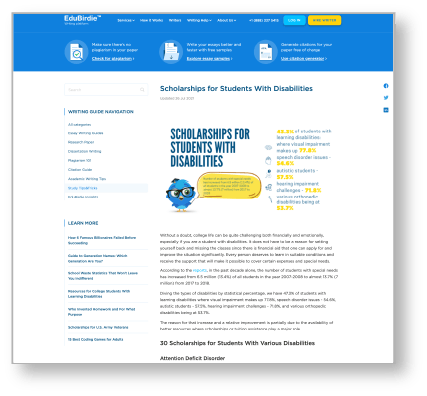Does the youth need financial aid to pay for postsecondary education or training? Financial aid helps pay for postsecondary education and training. Options include grants, loans, work-study, scholarships and educational benefits.
Youth in Transition Toolkit:
Youth in Transition Toolkit
- Minnesota’s Youth in Transition Framework
- Educate yourself
- Engage families
-
Support youth
- My best life
- In(ter)dependent living
- Employment
- Postsecondary education and training
Postsecondary education and training
Financial aid
-
- Awareness: Understand scholarships, educational benefits, and the importance of the Free Application for Federal Student Aid (FAFSA) — including which postsecondary education and training programs accept it and how to complete it, as well as the need to complete a separate financial aid application at the chosen postsecondary education or training program.
- Exploration: Identify financial aid needs and options related to chosen postsecondary education or training programs.
- Preparation: Complete financial aid paperwork for chosen postsecondary education or training programs.
- Implementation: Maintain any financial aid awards for chosen postsecondary education or training programs.
-
Postsecondary education counseling

LEARN: Develop your knowledge
Learn how to help youth understand financial aid options.
Help us develop this section! Do you have resource ideas to share? Use the Give Feedback link at the top of the page.
-
Applying for financial aid begins with the Free Application for Federal Student Aid (FAFSA). Direct undocumented and DACA youth to the Minnesota Dream Act application instead of the FAFSA.
Then, direct the student to complete a financial aid application at the chosen postsecondary education or training program. The student will be notified of any available financial aid, including:
- Grants: need-based funds from the state or federal government (repayment not required)
- Loans: provided by the state or federal government or a private entity (must be repaid with interest)
- Work-study: on- or off-campus job that helps the student earn money
Additional options for financial aid include scholarships and educational benefits for students with special circumstances and abilities. Examples include child care assistance, military benefits, merit aid for academic achievement, and scholarships based on factors such as race, ethnicity, special talents and life circumstances.

DO: Work with youth
Find resources to help youth understand and apply for financial aid.
-
Paying for college from the Minnesota Office of Higher Education provides an introduction to financial aid, including a financial aid estimator and tips to lower the cost of postsecondary education.
-
Encourage youth to use the Free Application for Federal Student Aid (FAFSA) to apply for financial aid for college or graduate school.
-
Share this list of scholarships for students with disabilities from EduBirdie. The list is presented by category, including general disabilities.
-
Cappex allows youth to compare scholarships at different schools.



